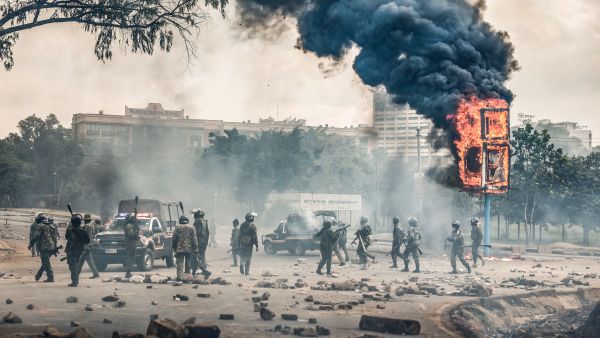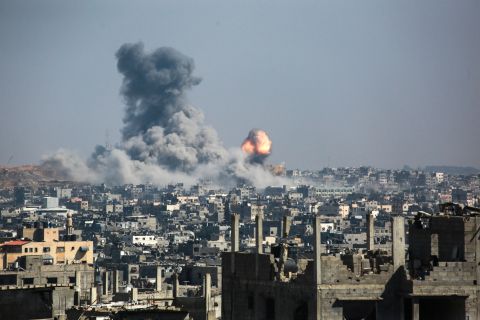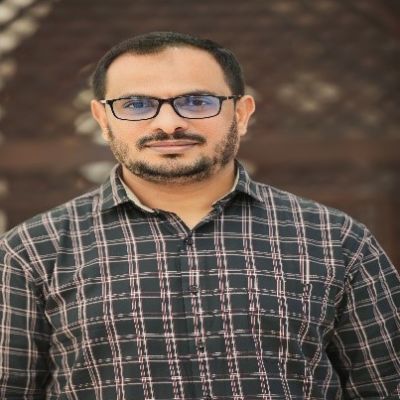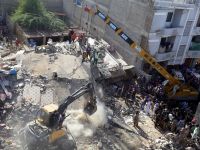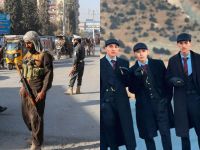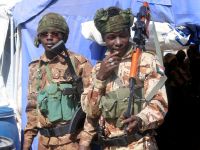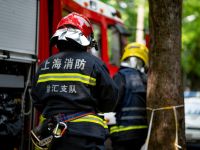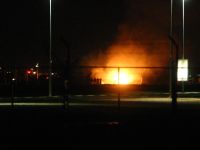ALBAWABA- At least eight people have been killed and more than 400 injured during nationwide protests in Kenya against President William Ruto’s government, according to a joint statement issued by the Kenya Medical Association, the Law Society of Kenya, and the Police Reforms Working Group.
The protests, which spread across major cities, saw thousands of demonstrators flooding the streets, chanting slogans like “Ruto must go” and waving tree branches in a symbolic gesture of peaceful resistance.
Police clashed with demonstrators in several locations, using tear gas and barricades to prevent crowds from reaching key government sites, including the State House and parliament, as reported by the BBC.
Protesters, many of them youth-led, faced off with heavily armed forces behind razor wire fencing. The same fencing encircled parliament after it was stormed and partially set ablaze exactly one year ago.
President Ruto, who was away from the capital attending a funeral in Kilifi, called for calm. “Protests should not be used to destroy peace in Kenya. We don’t have another country to go to. It is our responsibility to keep our country safe,” he said. His absence from the State House during the height of unrest raised eyebrows as demonstrators threatened to storm the compound.
Authorities initially banned live television and radio coverage of the protests. Still, the decision was swiftly overturned by the High Court in Nairobi, affirming media freedom amid growing concerns over transparency and state suppression.
Wednesday’s protests come against a backdrop of deepening public frustration over economic conditions, alleged police brutality, and growing disillusionment with Ruto’s leadership.
Among the 400 injured, 83 required specialized treatment, and at least eight sustained gunshot wounds. The casualties also included three police officers.
In Nairobi’s city center, shuttered businesses and smoke from tear gas painted a grim picture, but protesters remained defiant. Many carried placards bearing the names of those killed during last year’s deadly protests, with floral wreaths placed near parliament in tribute.
At least eight people have been killed and more than 400 injured during nationwide protests in Kenya against President William Ruto’s government, according to a joint statement issued by the Kenya Medical Association, the Law Society of Kenya, and the Police Reforms Working Group. The protests, which spread across major cities, saw thousands of demonstrators flooding the streets, chanting slogans like “Ruto must go” and waving tree branches in a symbolic gesture of peaceful resistance.
Police clashed with demonstrators in several locations, using tear gas and barricades to prevent crowds from reaching key government sites including State House and parliament. Protesters, many of them youth-led, faced off with heavily armed forces behind razor wire fencing — the same fencing that encircled parliament after it was stormed and partially set ablaze exactly one year ago.
President Ruto, who was away from the capital attending a funeral in Kilifi, called for calm. “Protests should not be used to destroy peace in Kenya. We don’t have another country to go to. It is our responsibility to keep our country safe,” he said. His absence from State House during the height of unrest raised eyebrows as demonstrators threatened to storm the compound.
Authorities initially banned live television and radio coverage of the protests, but the decision was swiftly overturned by the High Court in Nairobi, affirming media freedom amid growing concerns over transparency and state suppression.
Wednesday’s protests come against a backdrop of deepening public frustration over economic conditions, alleged police brutality, and growing disillusionment with Ruto’s leadership. Among the 400 injured, 83 required specialized treatment and at least eight sustained gunshot wounds. The casualties also included three police officers.
In Nairobi’s city center, shuttered businesses and smoke from tear gas painted a grim picture, but protesters remained defiant. Many carried placards bearing the names of those killed during last year’s deadly protests, with floral wreaths placed near parliament in tribute. A young woman draped in the Kenyan flag held a poster honoring those slain — a stark reminder that, for many Kenyans, the struggle is far from over.



